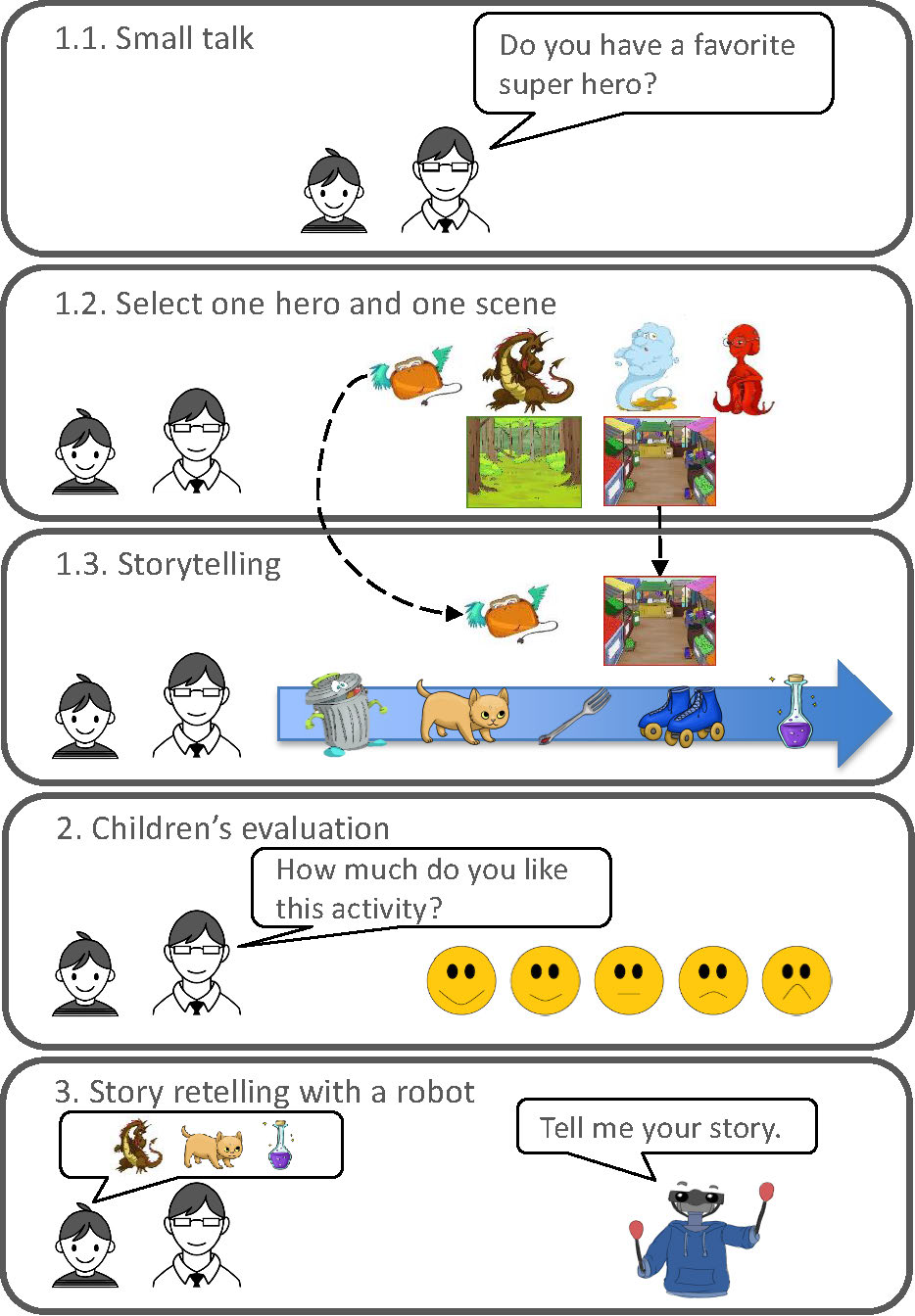Abstract

Joint storytelling is a common parent-child activity and brings multiple benefits such as improved language learning for children. Most existing storytelling robots offer rigid interaction with children and do not contribute to children’s stories. In this paper, we envision a robot that collaborates with a child to create oral stories in a highly interactive manner. We performed a Wizard-of-Oz feasibility study, which involved 78 children between 4 and 10 years old, to compare two collaboration strategies: (1) inserting new story content and relating it to the existing story and (2) inserting content without relating it to the existing story. We hypothesize the first strategy can foster true collaboration and create rapport, whereas the second is a safe strategy when the robot cannot understand the story. We observed that, although the first strategy creates heavier cognitive load, it was as enjoyable as the second. We also observed some indications that the first strategy may mitigate the difficulties in story creation for young children under the age of 7 and encourage children to speak more. This study suggests that a mixture strategy is feasible for robots in collaborative storytelling, providing sufficient cognitive challenge while concealing its shortcomings on natural language understanding.
Copyright Notice
The documents contained in these directories are included by the contributing authors as a means to ensure timely dissemination of scholarly and technical work on a non-commercial basis. Copyright and all rights therein are maintained by the authors or by other copyright holders, notwithstanding that they have offered their works here electronically. It is understood that all persons copying this information will adhere to the terms and constraints invoked by each author’s copyright. These works may not be reposted without the explicit permission of the copyright holder.